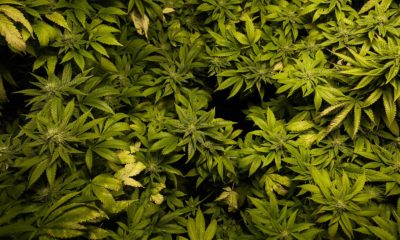
Science
Study Shows Youth Increasingly Choosing Cannabis Over Alcohol
A recent study conducted by the peer-reviewed journal Clinical Toxicology found that young people in the US overwhelmingly prefer cannabis over alcohol.
A study of cannabis use among young people in the US has increased by 245% since 2000 while youth use of alcohol decreased over the same period, according to the results of a study published this week. The study, which was posted online by the peer-reviewed journal Clinical Toxicology, tracked the incidence of misuse and abuse of alcohol, cannabis and other substances by young people reported to the National Poison Data System (NPDS) from 2000 through 2020. An analysis of the data identified 338,000 instances of intentional abuse or misuse of all substances among American children aged 6 to 18 during the period studied by researchers.
More than 80% of the reported ingestions of substances occurred among youth from 13 to 18, with a majority (58.3%) of cases reported among males. More than 32% of instances resulted in “worse than minor clinical outcomes.”
The research shows the changing trends in substance misuse and abuse among young people over time. In 2000, the largest number of alcohol misuse cases was reported, with the total steadily decreasing year over year since then. In contrast, the prevalence of reported cannabis exposure cases remained relatively stable from 2000 to 2009, then steadily increased starting in 2011, with a more dramatic spike in cannabis exposure cases between 2017 and 2020.
“Ethanol abuse cases exceeded the number of marijuana cases every year from 2000 until 2013,” Dr. Adrienne Hughes, one of the authors of the study and an assistant professor of emergency medicine at Oregon Health & Science University, said in a statement.
However, after that point, the apparent relative popularity of the two substances among young people had reversed.
“Since 2014, marijuana exposure cases have exceeded ethanol cases every year, and by a greater amount each year than the prior,” Hughes said.
The research showed that all types of cannabis have become more popular among young people. Marijuana edibles showed the highest monthly increase in use compared to other forms of cannabis, suggesting that many young people are eschewing smoking marijuana and switching to alternative cannabis products.
“These edible and vaping products are often marketed in ways that are attractive to young people, and they’re considered more discrete and convenient,” Hughes said.
The researcher noted that young people may also perceive alternate forms of cannabis consumption as safer than smoking, but some studies have shown that this perception may not necessarily be accurate.
“Compared to smoking cannabis, which typically results in an immediate high, intoxication from edible forms of marijuana usually takes several hours, which may lead some individuals to consume greater amounts and experience unexpected and unpredictable highs,” said Hughes.
Spike In Cannabis Use Concurrent With Legalization Efforts
The spike in youth cannabis use since 2017 coincided with continuing successful marijuana policy reform efforts across the US. Including the results of the 2022 midterm elections, when Maryland and Missouri voters opted to legalize recreational marijuana, a total of 21 states have legalized adult-use cannabis. The authors believe that while these legalization efforts have been restricted to adults 21 and older, the increased availability of a variety of cannabis products may make it easier for young people to access marijuana and may have contributed to the perception that cannabis is safe.
“Our study describes an upward trend in marijuana abuse exposures among youth, especially those involving edible products,” Hughes says. “These findings highlight an ongoing concern about the impact of rapidly evolving cannabis legalization on this vulnerable population.”
The study also identified high levels of over-the-counter medication abuse among young people. Between 2001 and 2016, the highest number of drug abuse cases related to dextromethorphan, a commonly used over-the-counter cold and cough medicine. Oral antihistamines were also among the most misused substances in the study. Deaths from drug misuse were rare, occurring in only about 450 cases (about 0.1%) identified by the study. Substance misuse deaths were most common among teenagers 16 to 18 and occurred more often among males than females. Deaths from substance use among young people were most common following the use of opioids.
The researchers also identified 57,488 incidents of substance misuse involving children aged 6 to 12. However, these cases didn’t usually include over-the-counter or illicit drugs but instead involved substances such as vitamins, plants, melatonin, hand sanitizers and others.
In their conclusion, the authors of the study wrote that the data from the NPDS “highlight an ongoing concern about the impact of rapidly evolving cannabis legalization on this vulnerable population.”
Limitations of the research include the data set being restricted to exposure cases classified as abuse or misuse. “It’s possible that additional misuse or abuse cases were classified otherwise and thus were missed,” the authors wrote.
The study states: “Trends in intentional abuse and misuse ingestions in school-aged children and adolescents reported to US poison centers from 2000-20,” was published online by the journal Clinical Toxicology on December 5.


























